30+ Sample Distribution Agreements
-
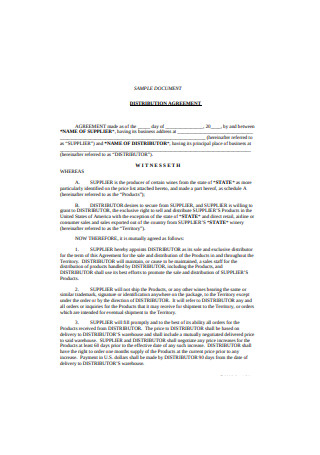
Sample Distribution Agreement
download now -
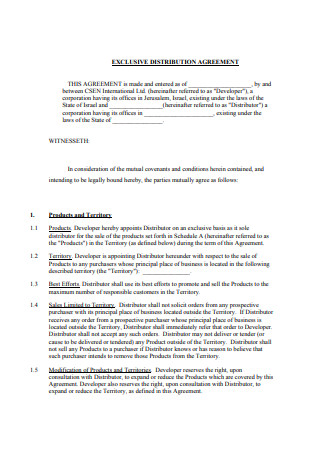
Exclusive Distribution Agreement
download now -

Software Distribution Agreement Example
download now -

Distribution Agreement Format
download now -

Sample Distribution Agreement Example
download now -

Services and Distribution Agreement
download now -

Sub-Distribution Agreement
download now -
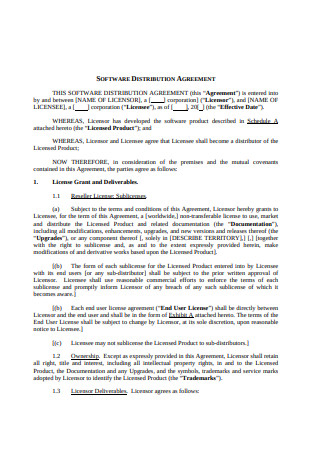
Software Distribution Agreement
download now -

Non-Exclusive Wholesale Distribution Agreement
download now -

Data Distribution Agreement
download now -

Basic Distribution Agreement
download now -

Production and Distribution Agreement
download now -
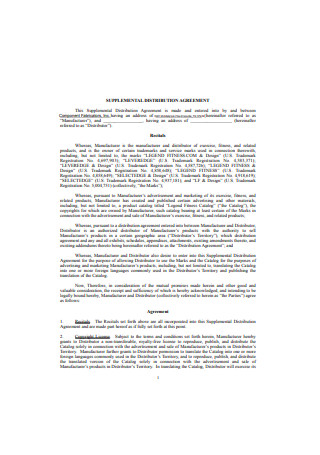
Supplemental Distribution Agreement
download now -

Software Development Distribution Agreement
download now -

Artist Digital Distribution Agreement Format
download now -

Distribution Agreement Example
download now -

Distribution Agreement Sample
download now -

Developer Distribution Agreement
download now -

Basic Distribution Agreement Format
download now -

Strategic Distribution Agreement
download now -

Digital Distribution Agreement
download now -
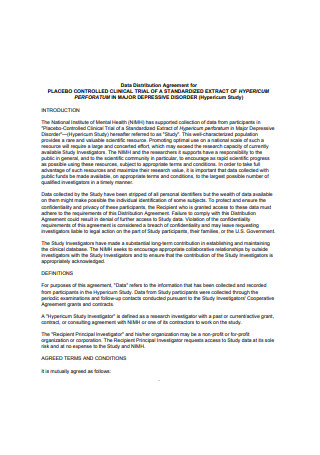
Data Distribution Agreement Example
download now -

Digital Data Distribution Agreement
download now -

Sample Data Distribution Agreement
download now -

Basic Distribution Agreement Example
download now -

Mobile Application Distribution Agreement
download now -

Distribution Agreement
download now -

Researcher Distribution Agreement
download now -

Food Distribution Agreement
download now -

Sample Distribution Agreement Format
download now -

Formal Distribution Agreement
download now
FREE Distribution Agreement s to Download
30+ Sample Distribution Agreements
What Is a Distribution Agreement?
Distribution Strategies that Companies can Apply
How to Construct a Valid Distribution Agreement
FAQs
How do you become a wholesale distributor?
What are the elements in distributing through outlets?
How much profit does a distribution company make?
How do you improve your system of distribution?
What does distributive efficiency mean?
What Is a Distribution Agreement?
Every company will always have a product to sell. And to sell it, it must reach its customers. There are many different ways to sell a product. Some do it through social media marketing, shop display, or distribution. A company who supplies products yet let others do the selling for them is called a distributor. A manufacturing company usually comes into agreement with a distributor through a distribution agreement. With this written agreement, a distributor can then market the items, he/she is entitled to sell. For example, company A (supplier) permits company B (distributor) to sell a certain product. Company B then tries to market the product by selling it in bulks to different stores.

Distribution Strategies that Companies can Apply
A company that wants to make their products known, should try to reach customers even outside of their main area. For that to be possible, a company should learn to strategize. It is an actual loss when a customer knows about a product yet doesn’t have access to it. With that in mind, here are different distribution strategies a company can apply:

How to Construct a Valid Distribution Agreement
Creating distribution contracts is not mandatory, and the parties involved can do business even with informal deals. The problem is, verbal agreements can cause future misunderstandings and conflicts. By agreeing on a written contract, both parties have a clear understanding of what the whole deal is all about and how it should be run. In case one party violates the agreement conditions, the contract will serve as a basis to address legal matters. Here are the steps in making a valid distributor agreement:
Step 1: Identify the Parties, Merchandise, Scope, and Length of the Contract
This is very basic. The contract should clearly state who the distributor is and where his/her location is. Also, the name and address of the supplying company should be written as well. In this section of the agreement, specify whether it is the distributor’s obligation to resell some merchandise or resell the whole line of products. Moreover, determine the geographical territory of the distributor, and point out whether it is going to be an exclusive or non-exclusive arrangement. Also, don’t forget to include the duration of the contract.
Step 2: Include the Duties and Accountability
Some thought should be taken in addressing important points for both parties in the agreement. The contract must address the duty of the supplier to supply the demands of the distributor in terms of operation. The supplier should set an expectation regarding sales for the distributor. Additionally, defining the duties regarding quota, sales, and documentation should also be clear on the distributor’s side.
Step 3: Write the Conditions Concerning Pricing and Advertising
State it clearly in the contract if a distributor has the right to resell a competitor’s product. Set the terms regarding the distributor’s use of an intellectual property when advertising the product. In addition to that, input concerns about product cost, mark-up and retail price. Furthermore, set conditions about returns and warranties in case a distributor receives damaged merchandise. Lastly, consider monetary allocations for advertising and indicate if it is the supplier’s duty to do so.
Step 4: Mention Terms for Disputes and Termination
Write down applicable state laws that will rule over the contract. Incorporate standard operating procedures (SOP) that will serve as a basis for possible disputes later on. Mention some conditions to consider before allowing contract termination. Most importantly, make a plain statement about who has the right to keep the merchandise after contract cancellation.

FAQs
How do you become a wholesale distributor?
According to the United States Industry and Trade Outlook, a wholesaler is a business that trades items to merchants, retailers, contractors, and to commercial and institutional users. So, how do you become a wholesaler? (1) Take a course that teaches about the foundations of business (e.g., business administration). (2) Identify what kind of product you want to market. (3) Count the cost of your whole business idea. Determine the cost for the product, shipping, and the warehouse. After computing the total cost, add your profit. (4) Acquire the necessary requirements and licensing for opening a business. (5) Apply for business loans. (6) Look for your own storeroom.
What are the elements in distributing through outlets?
There are 6 key elements in distributing goods to customers. (1) Customer Service. Make your products always available for your customers and deliver your goods on time. (2) Process of Ordering. A salesperson should know what to do when an order comes especially when it is received directly from the order station. (3) Managing Inventory. Inventory plays a major role in distribution and concerns itself on the money being invested and the decay of the products in time. (4) Storing Goods. This is where all the storing activities happen during the time the product is received until it is disposed. Storehouses are where products are being kept for long while outlets serve as a middle man for product traffic. (5) Product Transportation. The good should be supplied in the right amount as ordered and it should be given on time and in the right address.
How much profit does a distribution company make?
To calculate the whole profit margin of a business, the cost of products sold is deducted from the total sales. Then, the difference is divided by the total sales. The higher the value, the more profit a business is making. According to Entrepreneur, the usual profit margin of an indirect distributor is about 25%. To give you an illustration, a business with an annual revenue of $150,000 and a 25% profit margin pays $112,500 of the products sold.
How do you improve your system of distribution?
A well-functioning system of distribution will help improve your sales as a supplier. How do you improve it? (1) Keep an eye on your distributing channels so you will know which areas you have to advance. (2) Target the right market by gathering data through surveys. (3) Address problems that contribute to very low sales immediately and answer questions about the efforts made. (4) Expand your market. Add new products. Be competitive. (5) Know the trend so you won’t get left behind with new ideas coming from competitors.
What does distributive efficiency mean?
According to Economic Help, distributive efficiency happens when products are received and consumed by those with most need. The goal of distributive efficiency is to equally distribute resources to consumers because it is under the “law of diminishing marginal returns.” This law states—if there is an increase in product consumption, marginal utility will decrease. Marginal utility is the satisfaction a consumer receives by using certain resources. For example, a rich man has eight motorcycles and is planning to buy a new one. When compared to a middle-class man who is getting his very first motorcycle, the middle-class man will have a much higher marginal utility.
Whatever your background is, if you want to pursue distribution as your business, you have to learn its system. Basically, you will be trading products for a profit. To gain profit, you must sell a large number of goods because this is the essence of distributorship. Not only that, distribution also relies on where you decide to display and let your goods be bought by end-users. In all of these processes, one more necessary thing to consider is your use of a distribution agreement. For your business to run without a lot of setbacks, you must understand that keeping legal documents is of utmost importance. Imagine yourself business expanding and you continue to have deals with several distributors from different areas. What would it be like without distribution agreements? Once an issue arise between you and your supplier, what will be your basis for resolution?
